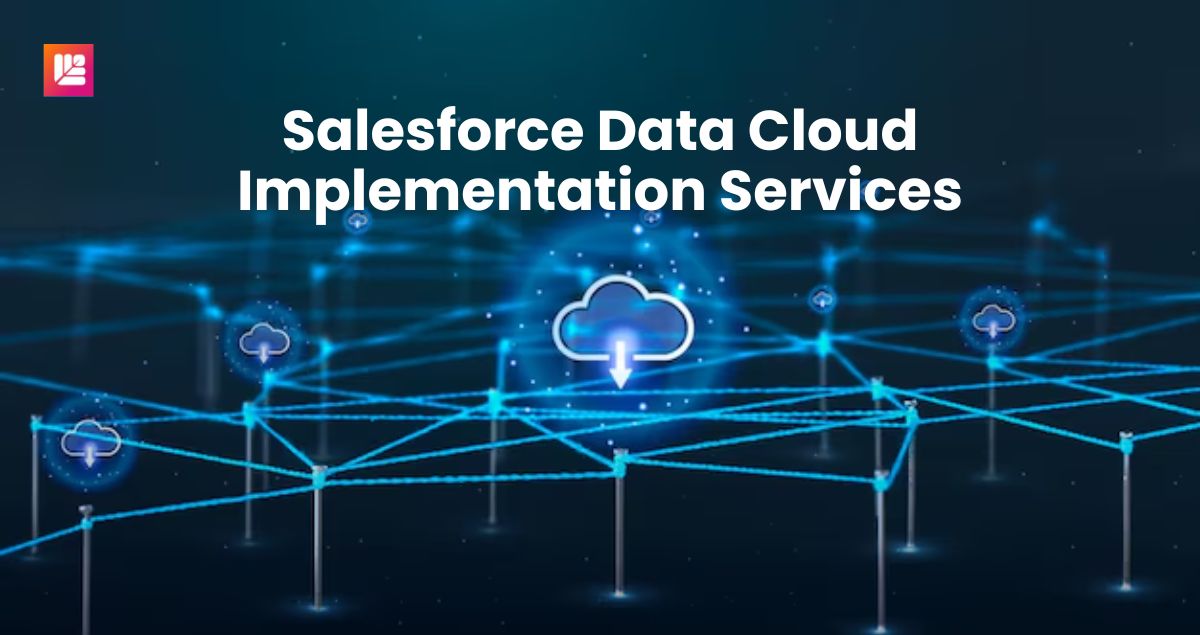Data is one of the most valuable assets a company can possess. To remain competitive, businesses must harness their data to derive actionable insights, enhance customer experiences, and streamline operations. Salesforce Data Cloud is one of the most powerful tools available for managing and analyzing data. However, successful implementation requires careful planning and execution. This guide will walk you through the key steps to ensure your Salesforce Data Cloud implementation is smooth, efficient, and effective.
1. Assess Your Business Needs and Goals
Before diving into any implementation process, it's essential to take a step back and evaluate what your business wants to achieve with Salesforce Data Cloud. Are you looking to consolidate customer data from various sources? Do you want to improve data accessibility and reporting capabilities? By clearly defining your goals and objectives, you can tailor the implementation process to meet your business needs.
Start by asking questions like:
- What business processes are we trying to improve?
- What data sources need to be integrated into the system?
- How will the platform support our sales, marketing, and customer service teams?
- What KPIs or metrics will be tracked, and how can Salesforce Data Cloud help?
Answering these questions upfront will help you build a roadmap for the implementation that aligns with your business strategy.
2. Create a Comprehensive Data Strategy
A well-structured data strategy is key to the success of Salesforce Data Cloud implementation. This strategy should cover several elements, including data governance, security, quality, and integration. Establishing clear rules for how data will be handled—who can access it, how it will be cleaned and validated, and where it will be stored—will ensure that the system operates smoothly and securely.
Consider the following when developing your data strategy:
- Data Governance: Who will oversee data accuracy, consistency, and security? Designate data stewards to manage these tasks.
- Data Quality: Ensure that the data being fed into Salesforce Data Cloud is clean, accurate, and reliable. Set standards for data entry and validation.
- Data Integration: Identify all data sources that need to be connected to Salesforce Data Cloud (e.g., CRM, ERP, third-party tools). A seamless integration plan will allow data to flow effortlessly between systems.
- Security and Compliance: Ensure the platform meets regulatory compliance requirements, such as GDPR or HIPAA. Implement necessary access controls to protect sensitive data.
3. Choose the Right Implementation Partner
Salesforce Data Cloud implementation can be complex, particularly for businesses that are migrating large volumes of data or integrating multiple systems. Hiring the right implementation partner or consultant can make all the difference. Look for a Salesforce partner with experience in Data Cloud implementation and a strong understanding of your industry. An experienced partner will guide you through best practices, avoid common pitfalls, and help you maximize the value of the platform.
When selecting an implementation partner, consider:
- Their experience with Salesforce Data Cloud
- Past case studies or success stories
- Their understanding of your business goals and industry-specific needs
- Post-implementation support and training
4. Plan for Data Migration
Migrating your existing data to Salesforce Data Cloud is a critical part of the implementation process. Poor data migration can result in data corruption, loss, or inaccuracies. A successful migration plan should be detailed, with thorough testing and validation to ensure the integrity of your data post-migration.
Steps to follow during data migration:
- Data Mapping: Identify which data needs to be moved, and map it to the appropriate fields in Salesforce Data Cloud.
- Data Cleansing: Before migration, clean your data to remove duplicates, outdated information, or errors. This ensures only high-quality data is imported into the new system.
- Migration Tools: Use Salesforce’s data migration tools, like Data Loader, to ensure a smooth and structured transfer of data.
- Test the Migration: Run test migrations on a small subset of data to identify and fix potential issues before performing the full migration.
5. Customize Salesforce Data Cloud to Your Needs
Salesforce Data Cloud is highly customizable to meet the unique needs of your business. Customizing the platform to your specific requirements will help ensure that you maximize its capabilities. Work with your implementation partner to tailor dashboards, reports, and workflows to fit your organization’s processes.
Consider customizations such as:
- Custom Dashboards: Build customized dashboards that give real-time insights into key metrics and KPIs specific to your business.
- Automated Workflows: Use automation to streamline processes like lead management, customer support, and data reporting.
- Integration with Third-Party Tools: Connect other applications or systems your business uses (e.g., marketing platforms, e-commerce sites) to create a unified data ecosystem.
6. Focus on User Training and Adoption
Even the most powerful platform is useless if your team doesn't know how to use it. A key component of Salesforce Data Cloud implementation is training your staff to use the platform effectively. Develop a comprehensive training plan that covers basic functionality, advanced features, and the specific workflows your business will use.
Provide your team with:
- Role-Based Training: Tailor training sessions for different user roles, such as sales representatives, marketers, or data analysts, to ensure everyone understands the features relevant to their job.
- Ongoing Support: Set up a support system for employees to ask questions or report issues as they become familiar with the platform.
- Change Management: Prepare your team for changes to existing workflows and processes. Communicate the benefits of Salesforce Data Cloud to drive adoption and ensure a smooth transition.
7. Monitor and Optimize Post-Implementation
Salesforce Data Cloud implementation doesn’t end once the system is live. It’s important to continuously monitor performance, gather feedback from users, and optimize the platform based on evolving business needs. Regularly review key metrics and dashboards to ensure the platform is delivering the expected value.
Post-implementation steps include:
- Reviewing KPIs: Continuously assess whether your goals are being met and if the data is delivering actionable insights.
- Collecting Feedback: Regularly check with your team to identify any pain points or areas for improvement.
- Making Adjustments: Based on feedback, optimize workflows, customize dashboards, or implement new features to improve efficiency and performance.
8. Leverage Ongoing Support and Updates
Salesforce regularly releases updates and new features, so it’s essential to stay up to date. Ensure you have a plan in place to take advantage of these updates and new functionalities as they are released. Your implementation partner can also provide ongoing support to help you maximize your Salesforce Data Cloud investment and make necessary adjustments as your business evolves.
Conclusion
Salesforce Data Cloud Implementation can be a game-changer for your business, enabling better data management, deeper insights, and improved customer experiences. By following this guide and partnering with the right experts, you can ensure a successful implementation that aligns with your goals and sets you up for long-term success. With careful planning, customization, training, and optimization, Salesforce Data Cloud can be a key driver of growth, efficiency, and innovation for your business.






Comments